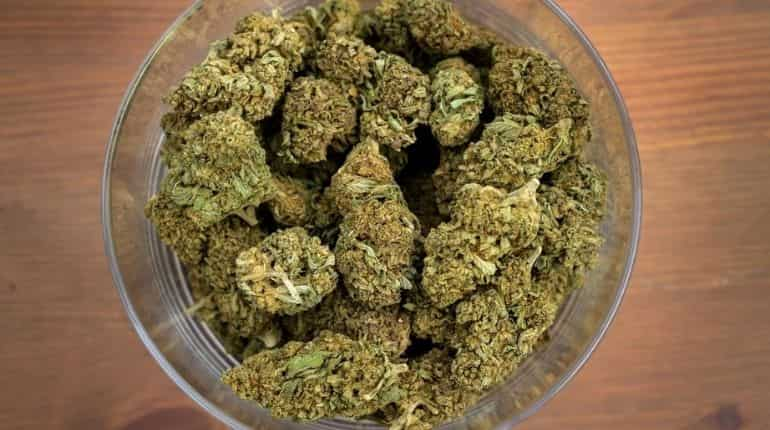Marijuana: magic plant or threatening drug ?, World News
[ad_1]
Some call it magic, while others are more likely to call it a threat, but marijuana has been a matter of political and social contention for decades now. Its supporters say the plant’s classification as a drug is misleading, while law enforcement agencies continue to perceive it as a “gateway drug.”
In the midst of this debate over its consumption, many of the plant’s pros and cons are buried. Marijuana is known by a variety of terms that vary from culture to culture. Pot, herb, greens, ganja, Mary Jane, herb are among the many unofficial designations given to the plant. Most people consume it by rolling the dried herb in a cigarette and smoking it, which causes a “highâ€.
What is marijuana?
Smoking is not the only way to consume the plant. In countries that have legalized it, marijuana is now consumed in foods such as brownies and chocolates, eliminating the serious dangers associated with smoking, including lung cancer. For those focusing on the smoking habit, vaping alternatives have flooded the markets.
The intoxicating agent in marijuana is known as delta-9-tetrahydrocannabinol. The plant can contain up to 500 other chemicals, including over 100 compounds that share their chemical makeup with THC and are known as “cannabinoids”.
What is the position of countries on marijuana?
Recently, Mexico took the pilot stage of legalizing marijuana, making the country the largest market for pot. Over the past decade, many countries have made sweeping changes to legalize marijuana. Even then, a lot of misinformation – both positive and negative, continues to undermine the limited knowledge about “drugs”. In Mexico, legalization could help not only regulate the plant and its derivatives, but could also help limit the control the drug cartels currently have over the growth and sale of marijuana.

In the neighboring United States, the situation is extremely complex. While many states have relaxed the penalties for marijuana, others continue to view it as deadly drugs like cocaine, crystal meth, and crack – which are known to endanger people’s lives. Marijuana, on the other hand, has not seen any deaths from its use. In the United States, the majority of sanctions associated with cannabis use are observed in black and brown communities, which US President Joe Biden acknowledges, who has also expressed interest in a radical national decriminalization bill. But many in the country are now seeking long-term reforms instead of simple legalizations, which could help those who have been jailed under anti-marijuana laws.
Panic is considered the worst-case scenario when it comes to overuse of marijuana, but it has never been recorded to have caused serious damage to a person’s health. An overdose of marijuana is scientifically impossible, which has forced many to support recent calls for its decriminalization. Today, many countries allow the medical use of marijuana while banning recreational use.
According to the 1961 United Nations treaty called the “Single Convention on Narcotic Drugs”, pot is classified as a Schedule 1 drug, which implies that it is an addictive drug with serious risks of abuse. .
Where is marijuana legal?
A handful of countries where the recreational use of marijuana is permitted are Canada, Georgia, South Africa, Mexico, Uruguay, as well as 18 US states and the Australian Capital Territory.
In the Netherlands, the consumption of marijuana is allowed in licensed cafes that have become the face of tourism in the country. But in the absence of any legal regulations, it will always be difficult to know where the dried plant comes from. Essentially, even in countries that allow recreational use but do not allow growth, the sources still remain largely illegal due to which no quality control can be applied. For a long time, activists have demanded that marijuana be marketed and regulated like alcohol, which they also claim to be far more dangerous than pot.

What is India’s take on cannabis?
In India, the use of marijuana is deeply rooted in the culture. “Bhaang,†a marijuana-based drink is an annual favorite when the Holi festival kicks off, although recreational use of the pot remains illegal. Another form of consumption is through the use of “resins” or “charas” which the plant is rubbed into until it looks like a sticky black substance resembling gum.
India’s Narcotics and Psychotropic Substances Act, which was passed in 1985, allows the consumption of “bhaang” because it is prepared using the leaves instead of the flowering tops.

Many countries are now trying to scientifically understand the long-term effects of marijuana use. Some studies claim that it can lead to higher risks of dementia, while others claim that it is very effective in regulating anxiety. In many cases, cannabis has been successful in neutralizing cancer cells. Even so, there is not enough detailed data available to draw any concrete conclusions. But as countries continue to adopt the plant, more details about the long-term benefits and risks of marijuana will be revealed.
Until then, puff puff pass (or not)!
[ad_2]

